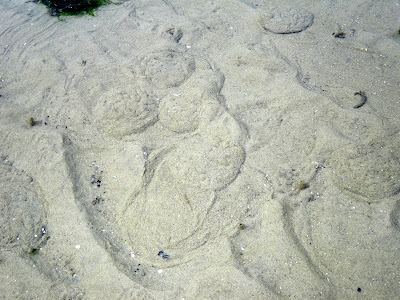How are the animals doing?

Recovery, I must say, is slow but steady. There are not many carpet anemones on the sandbar as compared to the past, but they are slowly coming back. This photo was taken at the southern sand bar.

The northern sandbar also has many of carpet anemones, especially at the water edge. It's a good sign.

Some of them look bright...

While the most look rather pale, which I thought it's quite usual for these carpet anemones.

I do suspect that the strong solar radiation in the recent afternoons has bleached out some of the carpet anemones like this one.

And this carpet anemone too. Good thing is, these are the only two bleaching carpet anemone out of the close to fifty carpet anemones I encountered during that day.

The southern sandbar just beyond the floating platform is still littered with tubeworms!

And among the tubeworms, I spotted this geographical seahare.

How about the button snails? Are they back yet? They have been missing exactly since one year ago. At least intertidally. I saw many of these white skeletons of the button snail shells at the northern sandbar.
Did they just died recently?

I also found some of the intact button snail shells with hermit crabs. Which proves that the button snails persisted during this one year. Just that they have probably migrated to the subtidal area.

As usual, the sand dollars are just so abundant! And many of them are really big. Alas, no keyhole sand dollars could be found. They are rare as usual to be found.

I went back to the same patch where common sea stars were last found and the stars are still there!

In fact I spotted two pairs pseudo-corpulating! Good... go procreate more!
That's all for the key animals that I was monitoring for. There are also some other creatures that I stumbled upon during the survey.

Like this smooth sea cucumber...

This aggressive elbow crab...

And this yellowish bristleworm.

Beneath the floating pontoon are a huge growth of the green mussels.

The hard substrate, together with many of these mussels, created crevices where many of the thunder crabs can be found.
That's all for the update this time! :-)